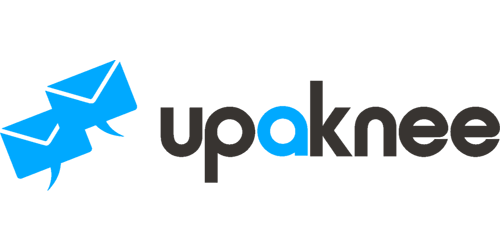
Exploring the Versatility of Email Newsletters: 3 Essential Types for Effective Communication
Exploring the Versatility of Email Newsletters: 3 Essential Types for Effective Communication
In the realm of digital marketing, email newsletters have emerged as a powerful and multifaceted tool. They offer a direct line of communication to your audience, enabling you to inform, engage, and promote your brand effectively. When it comes to crafting compelling newsletters, understanding the different types and their unique purposes is key to achieving your goals. In this comprehensive guide, we’ll explore the three fundamental types of email newsletters, providing context and insights to help you make informed decisions for your email marketing strategy.
1. The Informational Newsletter:
Purpose and Significance: The Informational Newsletter, also known as the Educational Newsletter, serves a primary purpose of sharing valuable and informative content with your subscribers. It positions your brand as an authoritative source within your industry or niche and fosters a sense of trust and reliability among your audience.
Key Characteristics:
- Educational Content: The core of an informational newsletter is its content. This content can take the form of articles, blog posts, guides, or curated industry news. The key is to provide your subscribers with valuable insights, tips, and knowledge relevant to their interests or pain points.
- Thought Leadership: Establishing yourself as a thought leader in your field is one of the significant benefits of informational newsletters. Consistently offering well-researched and insightful content can help you gain authority and credibility.
- Engagement and Value: These newsletters often contain thought-provoking pieces, how-to guides, or industry updates that keep your subscribers engaged. When your subscribers find value in your emails, they’re more likely to stay engaged and interact with your brand.
- Minimal Promotion: While you may include subtle calls-to-action (CTAs) or links to your products or services, the primary focus of an informational newsletter is on educating and providing value rather than direct promotion.
Examples:
- A marketing agency sending weekly newsletters with the latest industry trends, tips for improving marketing strategies, and case studies.
- A cooking blog sharing monthly newsletters featuring new recipes, cooking techniques, and ingredient spotlights.
2. The Promotional Newsletter:
Purpose and Significance: Promotional newsletters are designed to drive conversions and boost sales. These emails are strategically crafted to highlight your products or services, showcase special offers, and encourage subscribers to take specific actions.
Key Characteristics:
- Product or Service Focus: Promotional newsletters are centered around your offerings. They highlight new arrivals, discounts, limited-time deals, or special promotions.
- Clear CTAs: These emails feature clear and compelling calls-to-action (CTAs) that guide subscribers towards taking action, such as making a purchase, signing up for a webinar, or downloading an e-book.
- Visual Appeal: Eye-catching visuals, such as product images, banners, and appealing layouts, are essential for promotional newsletters to grab the recipient’s attention.
- Targeted Audience: Personalization plays a crucial role in promotional newsletters. Segmentation and targeting ensure that subscribers receive relevant promotions based on their interests, preferences, or past behavior.
- Conversion Tracking: Analyzing the performance of promotional newsletters is vital. This helps you measure the success of your campaigns and make data-driven decisions for future promotions.
Examples:
- An e-commerce store sending a weekly newsletter showcasing new product arrivals, offering exclusive discounts, and featuring customer reviews.
- A software company sending targeted emails promoting their latest software update with a limited-time discount for current users.
3. The Engaging Newsletter:
Purpose and Significance: Engaging newsletters focus on building and nurturing strong relationships with your subscribers. These emails prioritize entertainment, personal connection, and user engagement.
Key Characteristics:
- Diverse Content: Engaging newsletters embrace variety. They can include entertaining stories, interactive elements, quizzes, polls, contests, and user-generated content.
- Relatability: These newsletters often incorporate relatable content that resonates with the subscribers’ experiences, challenges, or interests.
- Storytelling: Storytelling is a powerful tool in engaging newsletters. Sharing anecdotes, success stories, or behind-the-scenes glimpses of your brand can create a personal connection with your audience.
- Social Sharing: Encouraging subscribers to share your engaging content on social media or with their network amplifies your reach and fosters community building.
- Non-promotional Tone: While engagement may indirectly lead to brand loyalty and conversions, the primary goal of an engaging newsletter is to entertain and connect with your audience rather than pushing sales.
Examples:
- A lifestyle brand sending a bi-monthly newsletter featuring user-generated photos, captivating personal stories, and a “Share Your Adventure” contest.
- A travel agency sending monthly newsletters with travel tales, destination spotlights, and interactive quizzes to discover your ideal vacation.
Choosing the Right Type for Your Goals: Selecting the appropriate type of email newsletter largely depends on your specific objectives and target audience. It’s also common to incorporate elements from multiple types to create a well-rounded email marketing strategy. For instance, you can include informational content in your promotional newsletter to educate customers about your products.
Remember that effective email marketing is not just about what you send but also when and how you send it. Consistency, timing, and optimizing your email campaigns based on subscriber behavior and feedback are crucial elements of a successful email marketing strategy. By understanding the distinct roles and benefits of these three email newsletter types, you can tailor your approach to better engage your audience, achieve your goals, and foster lasting relationships with your subscribers.

